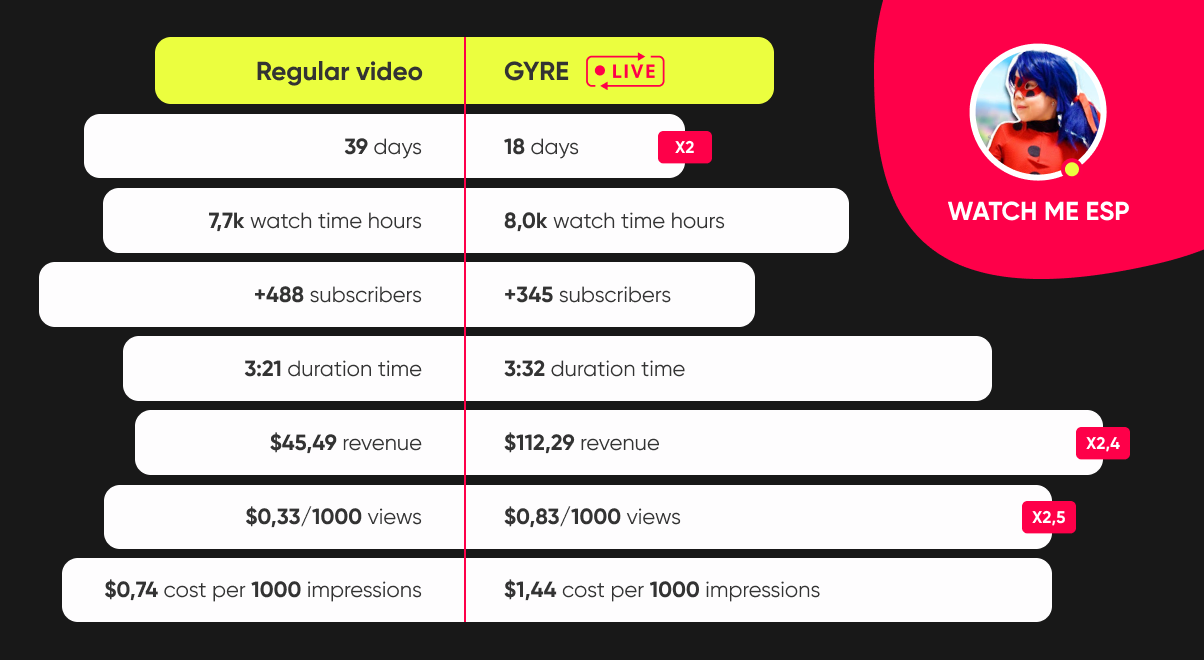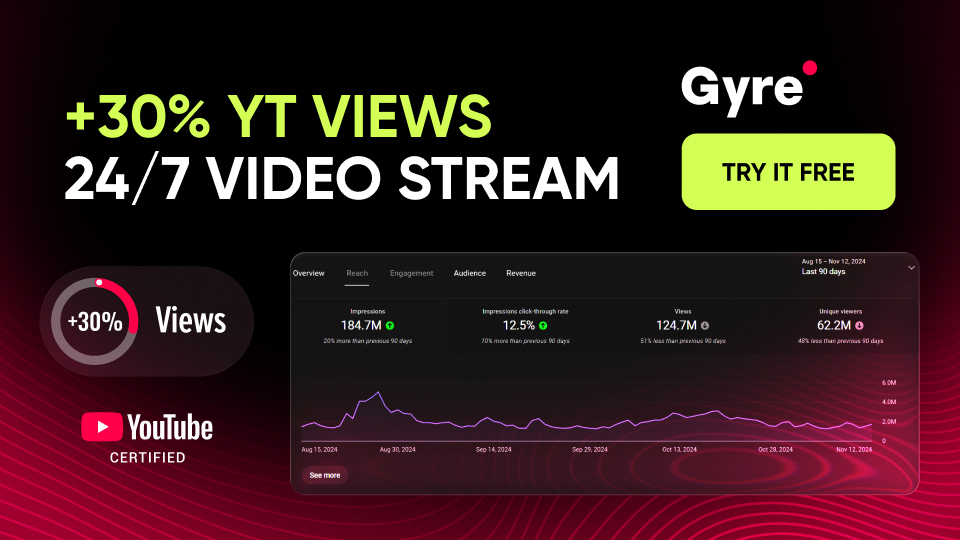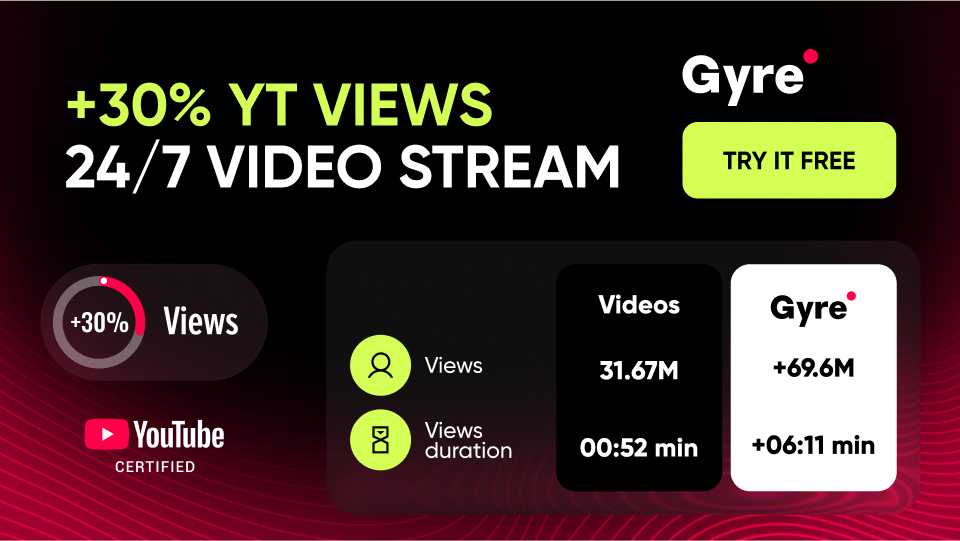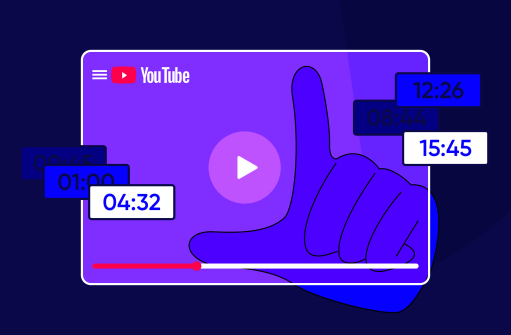The complexity of the work of each video lies in the fact that YouTube is simply bottomless. There’s always a choice, each niche and topic has its own leaders, the competition is colossal, and not every video manages to take its place under the sun. It’s obvious that YouTube promotes popular videos that produce more feedback, engagement, and have better quality.
In a nutshell, the journey of an average employee flows like this: as soon as a new video hits the channel, YouTube first shows it to your most dedicated viewers and analyzes their behavior. During the analysis, all quality metrics are taken: how many people watched the video, audience retention, whether the video is watched to the end, behavioral factors, traffic dynamics, and whether there is impression conversion from a high CTR ratio. If the stars align, then this approach gives an impetus to video development and YouTube decides to offer your content to a new audience in your topics. But there is a nuance. If your channel is small, then the speed of impressions for a new audience will be proportional to your existing subscribers. YouTube is careful with small channels, and that, in the first place, makes it difficult for them to break through the walls of competition.
Soon the video gains the maximum number of impressions and YouTube algorithms considerably slows down the promotion of the video. You can stop there, but why?
The first thing we want to draw your attention to is that YouTube is very interested in using all of the content on its platform to retain the user and maximize its profits.
If the algorithms receive a signal that the material is relevant, up-to-date, and has a high level of interaction with users, then you can see videos that are 3-4 years old and sometimes even 8 years old in the list of recommended videos.
Strategy 1. Reindexing the Video
The challenge is to send a message to the algorithms that your video meets user expectations and is worth reindexing and then identifying a target audience for it and re-issuing it in searches. Thus, activity to the channel is returned.
How can you do it?
Focus on optimizing existing content.
Optimization affects the discovery factor of videos in key traffic sources.
We can’t repeat enough that optimization is the same priority task as the creation of high-quality video content. What’s the point of creating in-demand content if it can’t reach the audience?
By optimization, we mean changes in video metadata:
- The visual component – the video icon, title, and description
- The technical component – tags, time codes, subtitles, and selection of high-frequency search keys.
The point of this strategy is as follows: changing metadata causes YouTube’s algorithms to return to your video and consider it as new from the metadata’s point of view.
Let’s say a year ago you edited and published video “A” on your channel. You have already forgotten about it, but today you accidentally stumbled upon it and realized that it’s still relevant. You have obviously increased viewers with different interests since you posted that content, and they could have missed this particular video. You can assume that this video and its content are in the field of their interests.
To start the reindexing chain reaction, all you need to do is change the visual metadata of the video and keywords. When the algorithms receive a signal that the video is new (according to metadata), relevant, and gets additional audience retention, YouTube will recommend it more actively to the new audience. Try this strategy on your most interesting videos by reindexing at least a few videos a day. And then watch how the overall statistics of activity metrics on the channel changes.
In our next article, we will talk in detail about the CTR of a video as a fundamental factor in successful reindexing. In the meantime, keep the link to the previous article about the optimization and detection factor.
Strategy 2. Continuous Streams
If we imagine reindexing as corporate training, then continuous streams are a full-fledged upgrade, professional training for raising the quality level of your videos.
What is a continuous stream? This is a video or playlist that loops (set to auto-repeat 24/7), creating an endless video stream.
You may have a reasonable question: “Why do I need this?” Here’s our answer.
Have you noticed that YouTube has been adding more and more enticements for users in recent years? For lovers of short videos, shorts have appeared, making it easier to compete with TikTok, or it has become possible to stream live. These new features focus on a platform that serves different types of users. It’s logical that the more variety of opportunities you provide, the more viewers you reach, and the more you can earn.
And everything new moves much better. We have noticed that YouTube’s algorithms promote streams better than regular videos. This is probably due to the fact that audience retention on streams is significantly higher than on regular videos. Thus, by creating a stream on your channel, you will enlist the support of YouTube (because the stream functionality is provided by the platform itself) and will be able to get more traffic, more new views and viewers, and, of course, more profit from the channel.
Streaming without a streamer?
Exactly! Continuous streams make it possible to create a stream with minimal effort using any video file. You can upload older videos from your channel that are still relevant as continuous streams, and this will not be considered duplicate content and therefore, you are not violating any platforms’ policies. This is because you’re not re-uploading videos to the channel, but only streaming continuously. After the stream ends, the videos do not remain on the channel; you can delete the stream from the channel at any time.
What’s the point of showing the audience old videos?
Well, firstly, if several thousand people follow you, it’s possible that many of them have not seen all of your videos. Secondly, you’re just offering all of your content to both the existing and new audience. You’re not forcing anyone to watch, you’re just making it available for the viewer to choose to watch the stream.
And, since YouTube more actively promotes streams, this is your chance to always keep your channel active and gain new traffic.
How can I start a continuous stream?
There are different programs for video recording and streaming, including OBS Studio which is the most well-known. But to work with this platform, you need to at least have certain technical skills, go through a number of configuration steps, use powerful equipment that can provide uninterrupted flow, and have strong electrical power and Internet connection.
Our Gyre service focuses exclusively on looping streams and makes life easier for users by offering an easy way to launch streams. All you need is to register on the platform, have content, a mobile device, or a computer.
A nice bonus for our users is the ability to simultaneously broadcast 4-8 streams, while OBS Studio, allows you to run only 1 stream as a rule. The advantage of running simultaneous streams is that you reach different audiences by offering different content to suit specific needs and interests.
To start streaming, you do not need a powerful computer since the Gyre service is a cloud solution and all the power is located on a separate server. All you need is internet access.
And the cherry on top of all of this – our clients’ success stories
Using one of our clients as an example, we will show how our continuous streaming service affects the main metrics in comparison to regular videos.
This channel specializes in teen topics.

We can see that continuous streams gave the channel almost the same results. The organic ad alone took 39 days, while Gyre achieved the same results in half the time. At the same time, the income from the stream and from 1000 views was 2.5 times more than from a regular video. Now consider that a channel can run four streams simultaneously. Imagine the channel’s income after 39 days with 4 streams actively working. The results are pretty impressive.
You can learn more about continuous streams including the benefits and all the nuances from our blog articles, or just write to us. You can also see for yourself the need for continuous streams on your channel by issuing a free Trial period.
Let’s upgrade your videos together so that they generate more traffic and help the channel grow and monetize your efforts!






